Tags
Bryn Euryn Nature Reserve, buteo buteo, common buzzard, common lizard, Early Bumblebee, Great Pied hoverfly, longhorn beetle, pollinating insects, Red Admiral, rutpela maculata, slow walking, speckled wood, strangalia maculata, tree bumblebee, Viviparous lizard, yellow and black beetle
It had been a good while since I’d spent the best part of a day meandering around the whole rich patchwork of varying habitats that make up my local nature reserve of Bryn Euryn, so a sunny morning that was forecast to stay that way into the afternoon offered the perfect opportunity to spend a day outdoors.
09:59 – Woodland Path
 Once outside I realised it wasn’t quite as warm as I’d thought it was going to be, but the air felt fresh, if slightly humid. The copious rainfalls of previous days have done wonders; plants that had looked sad and wilted a few days ago were perked upright and the leaves of the trees washed of dust and good as new. A Speckled Wood butterfly on ivy and the chirpy calls of foraging Blue Tits greeted me at the beginning of the path, which has also benefitted from the dust-settling cleansing rain.
Once outside I realised it wasn’t quite as warm as I’d thought it was going to be, but the air felt fresh, if slightly humid. The copious rainfalls of previous days have done wonders; plants that had looked sad and wilted a few days ago were perked upright and the leaves of the trees washed of dust and good as new. A Speckled Wood butterfly on ivy and the chirpy calls of foraging Blue Tits greeted me at the beginning of the path, which has also benefitted from the dust-settling cleansing rain.
The specialist woodland wildflowers of the early Spring have long-since finished flowering now and are directing their energies into producing seeds. There are a few later-flowering plants that can cope with the reduced sunlight though, including the beautiful Honeysuckle, one of my lifetime favourite plants whose fresh perfume I would happily fill my home with, if only someone could capture it perfectly.
It’s been a good year for this fragrant twining-climbing plant which has given me cause to make even more frequent stops on my walks; the scent of it in the air, particularly in the cooler mornings and evenings is as much a highlight as anything I might see or hear. It has maybe passed its peak of flowering now, but there’ll be occasional blooms to enjoy for a while to come.
Also happy in partial shade and flowering now are Navelwort, which is usually more easily recognised by its distinctive round fleshy leaves and Wood Sage, which despite its name is not confined to woodland paths; it’s a tough plant that is equally as happy growing out on exposed heaths and coastal cliffs.
10:12 Covered with white blossoms and well-refreshed the bramble patch at the top of the first rise of the path, was my first stop this morning. Gradually being lit and warmed by sunshine, it was already busy with a variety of insects.
A Blackbird was singing from a tree somewhere close by, his melodic, relaxed song lending an element of calm to the scene of frenetic insect activity. There were bumblebees: Tree Bumbles definitely the most numerous, some looking fresh, their heads and thoraxes bright deep tawny brown others faded to a pale blonde, perhaps bleached out by the sun. A few smaller Buff-tailed workers are busy between them and there are a small number of Honeybees, some of the first I’ve seen this year.
Butterflies joined the party, two Speckled Woods, which must have been a male and a female as they behaved amicably together, feeding almost side by side until disappearing together to the privacy of the leaves of an overhanging Sycamore. A Large White scooted over but didn’t stop, but a Red Admiral, missing a piece from a hind wing stayed for the whole length of time I was there, only moving short distances between flowers.
Most interesting of all were the big yellow-and-black beetles, that for some reason don’t seem to have a standardised common name, so are known to me as Strangalia maculata, (which is apparently no longer correct as they’ve changed it to Rutpela maculata!). In the midst of the tangle of bramble, honeysuckle and ivy stands the remains of a tree, which was snapped in a storm a few winters ago. I wonder if it’s within its damaged fabric that they spent their larval stage and from which they have emerged. For a while now I’ve seen them here each time I’ve passed by, several at a time. Until now all of my past and more recent sightings of these lovely beetles have been of them calmly feeding on flowers, so it was interesting to see them very active this morning, flying rather clumsily from flower to flower, not lingering for long on any.
The distant mewling of a Buzzard calling from above diverted my attention and I caught glimpses of it as it circled high above the trees.
This was the first one I’d seen in a while, so I wondered if it might appear back over the field, perhaps with its family, so moved on in that direction. It was a sun-in-and-out morning, surprisingly cool on the shady path when the breeze picked up.
Paths are edged with grasses, which are flowering now. False Brome predominates, covering large swathes of the woodland floor in places throughout this site, and there are lesser amounts of other species such as the distinctive Cock’s-foot.
10:40 There was nothing to see at this edge of the woodland except the wind rippling over the long grass of the meadow, and it was too cool to linger.
The sun came out again as I walked between the pine trees. This has become one of my favourite parts of the woods. I love the characterful Scots Pine trees with their tall, straight trunks crowned on high with heavy, strangely twisted branches in all seasons; but today with their rust-red bark still slightly damp and darkened by rain and highlighted by filtered sunlight they had a special glow.
There were no birds to be seen and for a while no sound of them either, until their silence was briefly broken once again by the Buzzard and the familiar contact calls of more Blue Tits working their way through the trees.
PATH EDGES
Opportunistic wildflowers crop up randomly along the path edges, mostly of those species that seem to travel alongside the blackberry brambles, accompanying them wherever they go. In flower now are nettles, dock and delicate-looking Nipplewort.
All have value to insects in their way, either as sources of pollen and nectar or via their leaves which are either eaten from the outside or mined and eaten from the inside.
10:47 – My next stop is at the brambly-scrubby patch at the junction of three woodland paths. In recent weeks this has been buzzing with a variety of bees, in particular Tree Bumblebees that clearly have a nest nearby, or there may even be two. There have been a lot of Early Bumblebees too, but lesser numbers of other common species and so far I’ve only seen one or two Red-tailed bumblebee queens; no workers.

 Predominately a raspberry bramble patch, which flowers earlier than blackberry, there is less blossom here now so is less of a draw for foraging insects now. There were a few Tree bumblebees about though, some working, one or two taking short rests on nearby sun-warmed leaves; poor things have probably already been out working for hours. This has been a great spot for hoverflies this Spring too, where I’ve added a few ‘new’ species to my list. It was starting to get warmer, which doesn’t seem to bother bees, but hoverflies often seek shade under leaves, so I wasn’t too surprised there were few to see. Then I spotted one of the largest of our UK hoverflies, a Great Pied Hoverfly (Volucella pellucens) on some more shaded brambles. Not a new species for me, but I’d not seen one in this spot before. In contrast there were also a few of one of our smallest and commonest hoverflies about, little Marmalade Flies (Episyrphus balteatus).
Predominately a raspberry bramble patch, which flowers earlier than blackberry, there is less blossom here now so is less of a draw for foraging insects now. There were a few Tree bumblebees about though, some working, one or two taking short rests on nearby sun-warmed leaves; poor things have probably already been out working for hours. This has been a great spot for hoverflies this Spring too, where I’ve added a few ‘new’ species to my list. It was starting to get warmer, which doesn’t seem to bother bees, but hoverflies often seek shade under leaves, so I wasn’t too surprised there were few to see. Then I spotted one of the largest of our UK hoverflies, a Great Pied Hoverfly (Volucella pellucens) on some more shaded brambles. Not a new species for me, but I’d not seen one in this spot before. In contrast there were also a few of one of our smallest and commonest hoverflies about, little Marmalade Flies (Episyrphus balteatus).
10:46 A bird landed in an Oak tree a few metres behind the Sycamore tree, on first impressions quite big,heavy-ish landing so probably a Wood Pigeon. I almost didn’t take any more notice, but then it came to mind that this is a good spot to see Jays, which I am always keen to try to photograph as they are quite elusive, so I focussed on it and was excited to see it was neither Wood Pigeon nor Jay, but a dark handsome Buzzard. What a beautiful bird, and posing so nicely too.
The Woodland Trail
11:10 As I walked on, I remember thinking that the sighting of the Buzzard and managing to get a half-decent photograph of it was going to be the main highlight of my day. But then you just can’t predict what you may or may not see on any given day in this treasure trove of nature, as I later discovered.
Reaching the Woodland Trail, I crossed it to sit on the bench for a few minutes to enjoy the sunshine and to listen to what was around me whilst I wrote some notes. I’m always fully aware of the soundtrack of my walks, but unless I get lucky and can photograph or record a singing bird can’t always properly recall what I heard. This is what I wrote here ” … for 30 seconds, maybe a little longer there are no extraneous sounds; no noise from the road, no dogs barking, no human voices, only the sounds of twittering birds – most likely Blue Tits reassure me I haven’t gone suddenly deaf! A Robin’s just flown into the tree above me. It sits and looks at me for a few seconds before flying into the woods I’ve just left. I see a Small Heath butterfly; it lands but I didn’t spot it in time and it flew off, surprisingly rapidly for such a tiny butterfly, ditto a Meadow Brown!”
As I got up to carry on I caught sight of a small gingery-furry bee flying over a fallen tree branch, which I thought might have been a Tawny Mining bee. I tried to focus in on it, but it was flying and although I pressed the shutter a couple of times I knew the bee wouldn’t be in focus, but may do as record shots. I can’t even begin to describe my feelings when I looked at those photographs on my computer later that evening. Expecting to see an out of focus bee, there too was also an almost perfectly in-focus lizard lying motionless and perfectly camouflaged along the length of the fallen branch which the bee was flying over. It had probably been watching me and wondering whether it should stay still or risk making a move. I’m grateful it chose the latter option.
Part of me was glad I hadn’t noticed the lizard, which is a Common or Viviperous Lizard, as I’m sure I’d have been so excited to see one in a position where I might get a photograph that I’d have fumbled with the camera and likely have missed it. But then I think it would have been nice to get a proper look at one rather than just a glimpse of a disappearing one, which is all I’ve managed so far in my years of tramping this hill! Mainly I’m just more than happy to know it was there and I have a photograph, however I managed it!
Being oblivious at this point to my lizard ‘capture’, and back in insect-seeking mode, I wandered along to the huge bramble tangle that once in flower has always been a brilliant place to spot a good variety of insects in a relatively short space of time with minimal effort. Years ago, this was the first place on the reserve that I recognised as an insect ‘hotspot’. There was a fair amount of activity here this morning, mostly from bumblebees, but there was also another Gt Pied Hoverfly, a Red Admiral butterfly, a Strangalia maculata beetle that only showed me its antennae and legs and a few different species of flies. Getting photographs was tricky, insects were constantly moving, the sun was shiningly brightly, but probably more to the point the path was getting busy with people and dogs and I got fed up having to keep moving to let them pass at a ‘safe distance’.
Tutsan growing alongside the bramble already has ripening berries. Its flowers hadn’t the same degree of appeal to insects as bramble, but I did catch a little Marmalade Fly visiting it.
- Tutsan with berries
- Episyrphus balteatus
The woodland is at the peak of perfection now, leaves are fully grown, in a myriad of shapes and uncountable shades of fresh green; climbers and ramblers are not yet over-reaching themselves to become sprawling and untidy and the plants along the path edges are not yet spilling over it.
Speckled Wood butterflies were stationed every few metres along the path, whether basking on the ground or perched on leaves overhanging the path. Constantly on alert, they readily explode into action to see off any intruders into their territory.
Generally birds are much quieter these days, apart from the Blackbird I heard earlier the only ones still singing to any extent are our summer breeders-Chiffchaff and Blackcap.
The closed canopy makes it too shady for there to be much in the way of ground-level plants for a while, so there are few distractions, other than Speckled Wood butterflies of course and the occasional sight of a Blackbird foraging in the safety of the dappled shade.
No matter how often I walk along this Trail, several times a week sometimes, each time I see it with fresh eyes. Looking up there are places where trees on opposite sides seem to avoid contact, leaving fascinating space between their contrasting leaves.
The same scenery changes according to the lighting effects; the varying cloud cover and the angle of the sun at different times of the day as the seasons progress all contribute, as do the weather conditions, particularly on days when there’s wind and how strong it is. On the ground, complex shadow patterns may be cast on the uneven canvas of the bare-earth path.
12:05: The steps up from the shady sheltered Woodland Trail lead into what could be an entirely different dimension….
a good place to take a break..


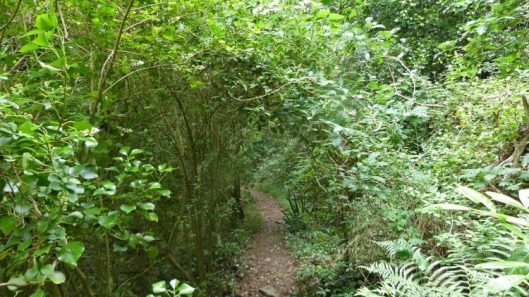
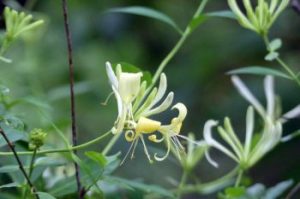


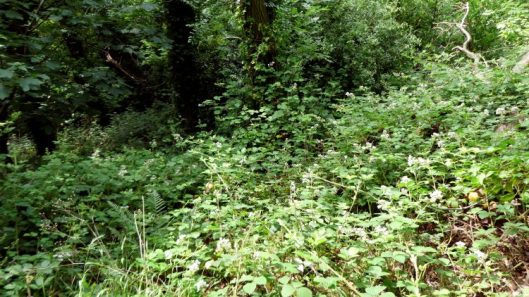





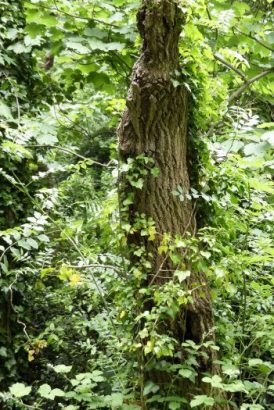













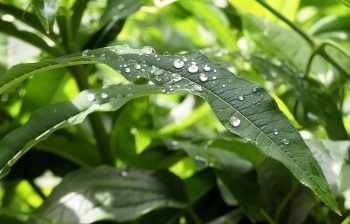


















you have some fabulous treats on this walk, such a pleasure to be able to join you
LikeLiked by 1 person
Thank you Becky, it’s a pleasure for me to be able to share my ‘finds’ with people that appreciate them! It always amazes me that so many of the people out in places such as this are completely unaware of what they’re not seeing and hearing.
LikeLiked by 1 person
It’s one of my bugbears in Portugal when we come across groups of walkers, they are so busy chatting and looking at the view they don’t see what’s under their feet or hear what’s just around the corner. Thank goodness for lovely people like you.
LikeLiked by 1 person
Mine too, Becky, I sometimes think I’m the only one that doesn’t really ‘get’ walking and talking!
LikeLike
I really enjoyed this summery walk and the many layers and your descriptions also of what you heard, including the silence! Those Scots Pine trees are particularly beautiful.
LikeLiked by 1 person
Thank you, this is almost always a visual treat of a walk, but even during the main ‘lockdown’ weeks when volume of traffic was drastically reduced there was still almost constant traffic noise, so the rare fleeting moments of silence felt very special! I love those trees, they are native to Britain, but their starkness adds interesting contrast to the more lush foliage of oaks, ash and sycamore.
LikeLiked by 1 person
We did have unusual silence in the first two weeks of our severe lockdown, but since then the almost constant hum of traffic has returned.
Thanks for introducing me to the Scots pines.
LikeLike
Wonderful descriptive narration and photos to match. I could imagine the ‘feel’ of the trail and delighted in all the critters, butterflies and birds you recorded. Enjoyed reading the detail of the forest at its ‘peak of perfection’ and envied you being embowered by such green verdancy with a marvel of leaf patterns above and cast in shadows below.
LikeLiked by 1 person
Thank you for your kind words and for having worked your way through the whole narrative and, I think ‘getting it’! For me, walks, especially those in woodland settings are such an uplifting and multi-dimensional sensory experience, often with many things happening simultaneously-difficult to convey when you break it down into ‘stills’ linked by words.
LikeLiked by 2 people
Thank you for putting a name to the bright yellow flowers in my garden – tutsan! And what a find that lizard was.
LikeLike
Such a lot of treasures on your walk. And I can’t believe you didn’t see the lizard until after when you looked at your photos. It is quite well camaflaged though. Brilliant, I have never seen a lizard in the wild. Great buzzard shot too.
LikeLiked by 1 person
Thank you Shazza, it was indeed a treasure-trail of a walk! I still can’t believe the lizard incident myself – I don’t think I’ll ever forget the feelings of seeing that image for the first time, initial shock, followed by disbelief and joy that made me laugh out loud, thanks to whatever made me pursue the elusive bee and eternal gratitude to the photography god that put it into focus for me! That’s probably my best Buzzard to date too!
LikeLiked by 1 person